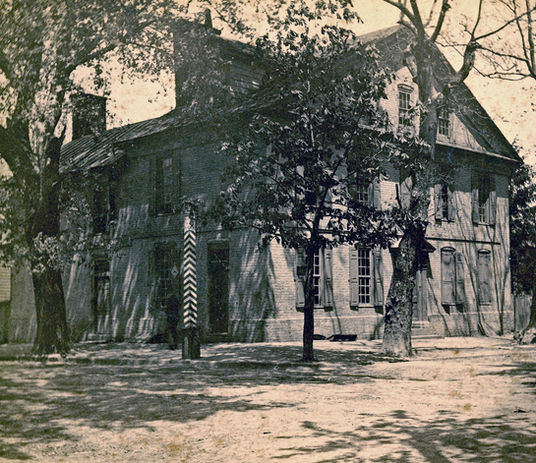
THE AMSTEL HOUSE
The Amstel House reflects the style and refinement of New Castle’s early prosperity, and the people that made it possible.
It is New Castle’s earliest remaining Georgian residence.
“THE AMSTEL HOUSE IS NO DREAM… IT IS REAL, THANKS TO THE FAIRY GODMOTHER OF GOOD ARCHITECTURE…”
--ARCHITECT ALBERT KRUSE
The first owner of the Amstel House property, trader Jan Roeloff deHaes, was among the town’s original settlers when Fort Casimir was established in 1651. The property later passed to his grandson near the turn of the 18th century. By 1708, documents record a “small old brick house” on the property. This brick house was razed before the Amstel House was constructed. John Finney, an Irish physician and uncle to Declaration of Independence signer Thomas McKean, built the current house after purchasing the property in 1738. Finney and his wife Elizabeth French are reputed to have owned half a dozen town houses and vast properties throughout New Castle County. After Finney’s death in 1774, the property passed to his daughter, Anna Dorothea. The stories of the Amstel House’s 18th century occupants reflect the rich cultural and political life of the period. Anna Finney rented the house to attorney Nicholas Van Dyke, who would eventually become the seventh governor of Delaware while living there. As Van Dyke’s home, the Amstel House was central to Delaware’s revolutionary efforts, and was frequented by prominent guests, including George Washington who visited for the wedding of Van Dyke’s daughter, Ann, and Kensey Johns in April 1784. The couple later lived in the Amstel House until their home at 2 E. Third Street was built in 1790. Kensey, also an attorney, was a member of the committee that decided to ratify the Constitution, making Delaware “The First State” in 1787. Their daughter Fidelia Johns, born in 1785 at the Amstel House, married Thomas Stockton, another attorney and military veteran who was elected governor in 1840. Today, the house is furnished with many of the Van Dyke and Johns families’ personal possessions. In the 18th century, the Amstel House was also the home and workplace of enslaved, indentured and hired workers who made the lifestyle of the Finney, Van Dyke and Johns families possible. We know the names of some of these people including Hannah, a young enslaved girl, and Betty, an 18-year-old enslaved woman, but others are, to date, unknown to us. Their personal stories are equally elusive since personal records for most of them do not exist. However, research continues with the hope of uncovering the names and stories of everyone who lived and worked at this property. The Amstel House’s history in the 19th century mirrors the evolution of the town as a transportation and administrative center. In 1795, the home received a new owner, Joseph Tatlow. Tatlow owned the stagecoach line to Maryland in the 1770s, and was part owner of the packet boat lines operating between New Castle and Philadelphia. From 1832 to 1904, the Amstel House was passed through four generations of a single family deeply involved in the town’s commerce and office holding class-- Sheriff John Moody, the Burnhams, and the Birds. The last owner from this family, noted environmentalist John Bird Burnham, was born here in 1869. The Amstel House underwent renovation by noted Delaware architect and preservationist Laussat Rogers around 1905. The result is a historic house museum that is a vivid illustration of the cultural phenomenon of the Colonial Revival, and of the rich and complex history of New Castle’s preservation initiatives. The Amstel House is open for guided tours on Saturdays and Sundays from April through December.

THE AMSTEL HOUSE AFTER 1790
Our guided tour ends in 1790. Learn about the people that lived in the Amstel House between 1790 and 1929, when the house became a museum.




